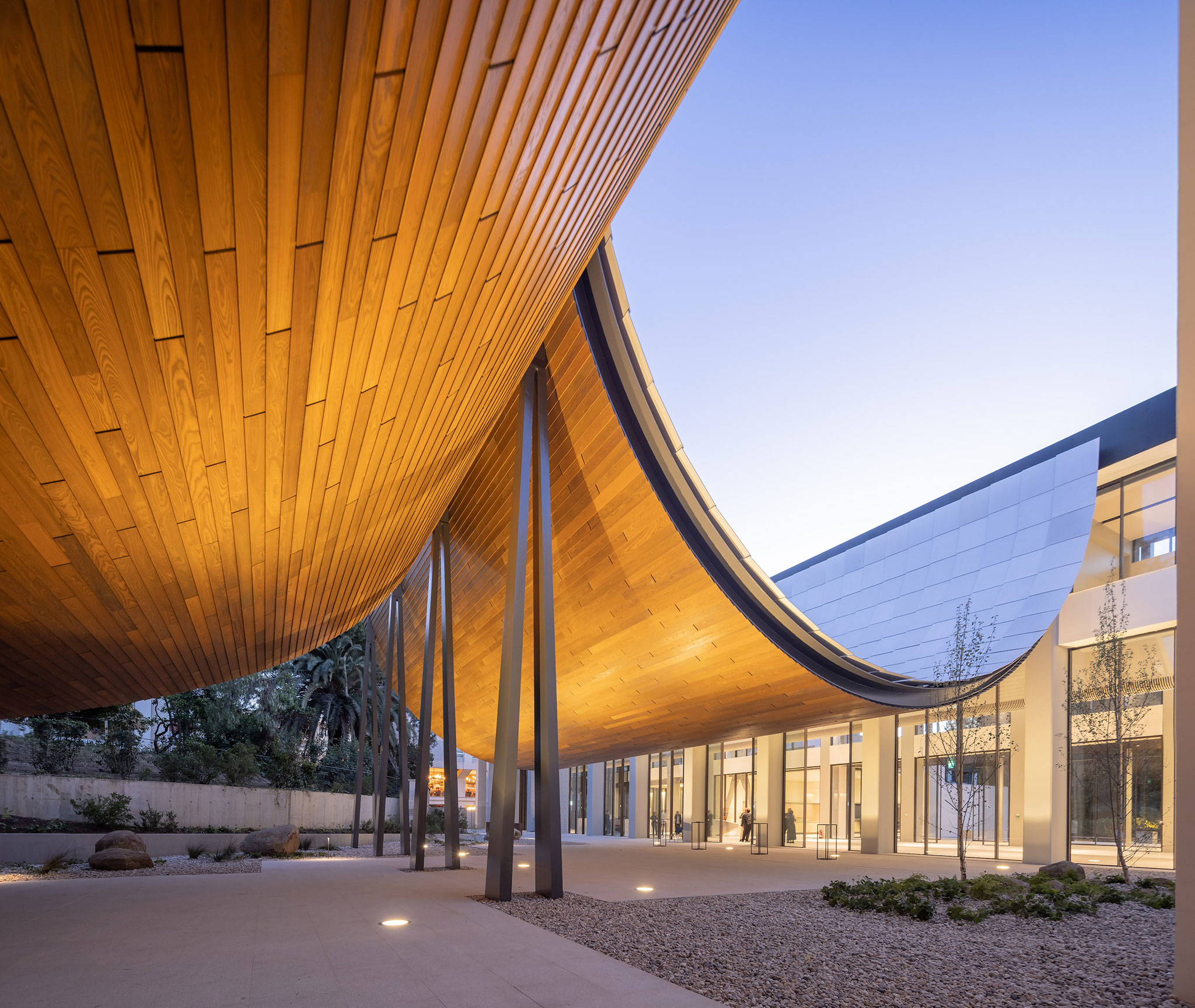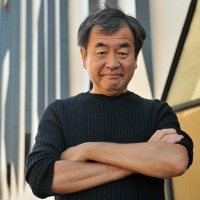
Japanese architecture firm Kengo Kuma & Associates has conceived the architecture and interiors. Kuma proposed the introduction of a canopy inspired by the Japanese engawa, creating a new transition space between CAM Gulbenkian and the park beyond creating a new centrality for the existing building.
Defined by a free-standing canopy structure is approximately 107m long by 15m wide and consists of a gently curved rigid plate supported by two rows of columns. This sweeping canopy is composed of ceramic tiles made in Portugal.
The building’s redesign by Kuma draws from the Engawa, a sheltered walkway typical of Japanese dwellings, considered neither totally inside nor outside. Incorporating this typology, the architecture has been integrated into the surrounding gardens of the Gulbenkian Foundation – a nod to Kuma’s vision for ‘soft and humane architecture’ and in response to CAM’s commitment to establish a greater connection between the building, the garden and the city.

Centro de Arte Moderna Gulbenkian by KKAA. Fotografía por Fernando Guerra.
Accessed through a new entrance, the gardens have been extended to create a fluid and dense urban forest conceived by landscape designer Vladimir Djurovic. For CAM’s next chapter, design studio A Practice for Everyday Life has developed its new visual identity, inspired by the organic lines and sheltering nature of the Engawa and the building.

Centro de Arte Moderna Gulbenkian by KKAA. Fotografía por Fernando Guerra.
Project description by Kengo Kuma
Our goal here was not to create a singular piece of architecture but to craft an environment. The art museum of the future will likely embody this—a seamless space where art and people exist in harmony.
We felt no greater joy than experiencing art while a gentle breeze danced through the greenery. The Gulbenkian will surely become a model for such a future museum.
In Japan, there is a space between the garden and the building called "ENGAWA." It's one of the most cherished aspects of Japanese architecture, offering a rich, layered experience. It's more than just a threshold— a place where humans and nature meet, a space that revitalizes the spirit.
At the Gulbenkian, we have created an ENGAWA using wood and white ceramic tiles. These materials, wood and clay, have long been cherished for their role in connecting people to nature, and here were used as the main materials for the ENGAWA that unites the garden and the building.

Both the Portuguese and Japanese share a deep love for wood and tiles, using them to build their homes and cities. When you look up at this ENGAWA from below it resembles a wooden ship. Ships have long been essential vehicles in the histories of both Portugal and Japan.
While neither country is large, they are surrounded by long coastlines, and their people have always been closely tied to the sea. Ships carried them to fish, trade, and explore the wider world. Here, too, this large wooden ship will become a vessel, connecting people to the world. Through this ship, imaginations will be sparked, and dreams will expand beyond boundaries.
As a result, I believe many things will come together in this new museum. Not only does the garden seamlessly connect with the building, but new walls and gates forge a deeper connection between the museum and the city of Lisbon. And through the ENGAWA or ship, the museum reaches out—not just to the world, but to the universe beyond.














































































